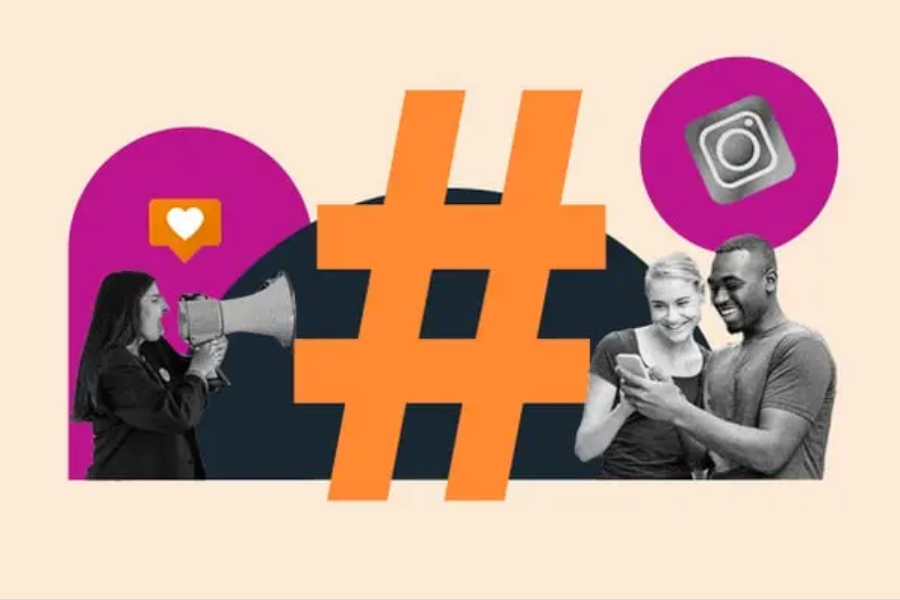
Science of Hashtags
Hashtags aren’t just cool because they look like waffles or highlight a text out of the basic paragraph. There is something special about hashtags that has got the whole world hooked, and no social media post bound to make an impact can roll without a hashtag. What is so special about hashtags that allow the user to be attracted and brands to be recognized?
The trend arising from Twitter is now part of almost every social media platform except for LinkedIn, which is not such a huge fan of Hashtags. While Hashtags are common, they are important in forming a category and targeting focus keywords. The science of hashtags says that by defining a category through hashtags in your product, you are visible to anyone interested in that particular hashtag.
This is a great relief because if you want to compete, you need to sit among your competitors and convince your audience why you are the best. Research has provided evidence of how hashtags play a vital role in maximizing audience engagement through smart keyword placement. The best idea is to use your primary keyword as a hashtag this will increase your chances of being searched.
However, you need some practice to learn about keyword placement, for starters you can check online tutorials and websites such as Crovu
How to Use Hashtags
Now when it comes to using hashtags, there are certain rules and regulations on how these symbols are best incorporated for better results. For example, there is a certain rule on the hashtag density and exceeding that number, not only you could become too desperate to be noticed, but your content also loses the value to be understood.
Hashtag Density
As the customers are more attracted to being understood and heard and sense that a brand is working for its benefit solely, they feel fear. This sense of fear causes them not to rely on the brand.
Even though business wills to rule the market using the hashtag, it should be wise. We recommend using 2-4 hashtags that are popular, several 4-6 hashtags that lie in the mid-range of popularity, and approximately 1-3 hashtags related to the particular niche. Just don’t forget to tag your branded hashtag in the post.
Relevance
A word that fits your brand and comes into your mind as the ultimate target research might be relevant to your goal, but if most of the audience isn’t fond of it, don’t go for it! Locating the right hashtag is a tricky job, and you need to be strong with your research game. Start by analyzing how your competitors act in the market and take inspiration from the best; jealousy is a negative emotion. In this case, it’s pretty detrimental.
Secondly, find your audience’s interest no matter how far from your interest; you just need to be attentive to your audience’s needs.
Hashtags for Instagram
The latest marketing world is making use of every social media platform to engage with the audience, but nothing is like Instagram marketing. Instagram is full of influencer marketing and popular to provide close interaction with the customers. Users find it as a window to stay connected to their favorite personalities and their desired brands.
And when it comes to making an impact, no Instagram post is complete without a hashtag. Moreover, when someone needs to search for something on Instagram, there is a whole separate thread to go with the relevant hashtag. Talk about target research.
Now you must be thinking if I have to get noticed on Instagram, I better impact. A whole sea of hashtags in my content that is bound to drive the right audience in one way or another. It is important to know that Instagram hashtags can make or break your entire marketing plan.
You incorporate them wisely, and you get good results. Audiences are driven to your page like crazy, and you use them wrongly; not only you look needy, but you also get penalized by Instagram’s algorithm. Yes, Instagram realizes when you are trying to just barge in without any serious efforts.
Choosing the Right Hashtags for Instagram
Don’t worry; this Instagram hashtag guide is just what you need; we don’t mean to freak you out but help you get at the top of your business game.
Perspective
The Number one formula is to get in the shoes of your audience. We don’t mean literally but in the sense of changing perspectives. You are a brand, who knows about their product, who loves their product (attached and infatuated) because you developed it, you ideated and marketed it, but your audience is looking for their needs to be met.
They don’t care whether you spent years coming up with the right recipe or spent hundreds of dollars on the design. If it doesn’t seem right to them, they won’t buy it. So how to make them think you are the right choice for them?
Be there where they are searching. Simple as that. Your hashtag should not be about your product but about what your customer needs from that product.
Another trick is not to be one of the many. Sure, you want to dive in, dive right, but with too much crowd, chances are you might go unnoticed.
Size
The size of the hashtag is one of the most important features. Think it objectively, when you search for a product or a topic of interest, your habit is to type the minimum number of words possible. As humans, it is our nature to give as little as possible and get as many as possible.
If you go for too big hashtags, you are at greater risk of being left out. If you go with too simple, you are surely going to be dumped in between the crowd. Start by typing your hashtag in the search bar and see the number of posts on that particular hashtag.
Anything from 20,000 to 500,000 posts can be a hit spot for you, your luck! Anything under or greater than that have a higher probability of being in the outliers, thus ignored!
Specific
The Major Category then your specialized category. You have to be specific yet vague about your product. Start by the category, then dive into the subcategory. For example, if you target kids’ clothes and accessories, you may want something like #fashionkids. As to give away some information but not reveal it all.






